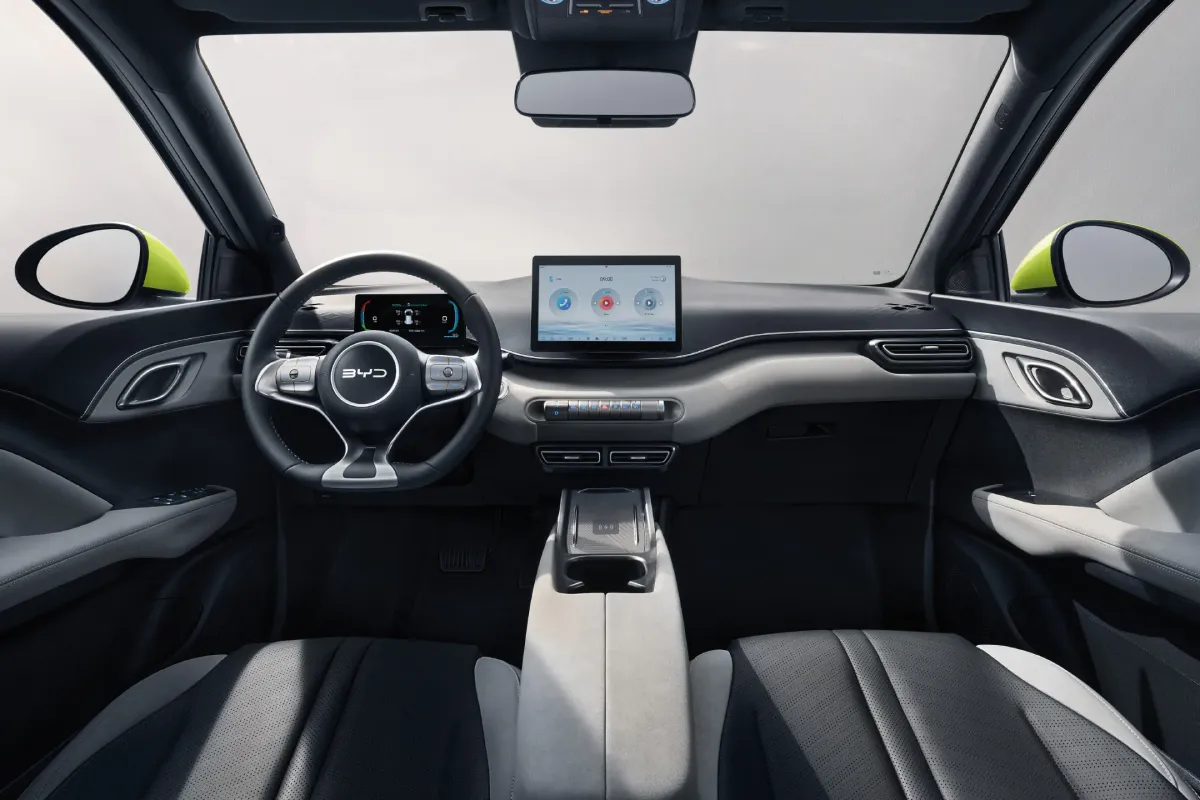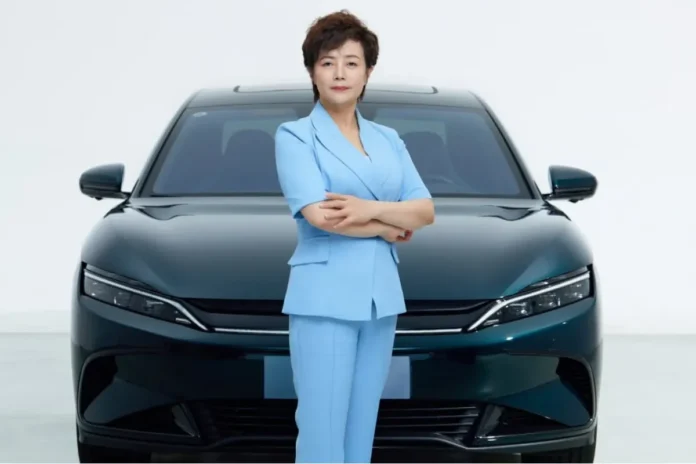Introduction: A New Player in Europe’s EV Landscape
Since its bold entry into the European market in 2023, BYD, a Chinese electric vehicle (EV) manufacturer, has transformed from a relatively obscure brand to a formidable contender in the automotive industry. Founded in 1995 and entering the automotive sector in 2003, BYD initially focused on the Chinese market but has since set its sights on global expansion. Europe, with its stringent regulations and competitive landscape, represents a critical proving ground for the company’s ambitions. This article, brought to you by CommaFast, explores how BYD is leveraging strategic investments, innovative models, and local partnerships to conquer Europe’s EV market, while addressing the challenges it faces in establishing a lasting presence.
BYD’s European Journey: From Debut to Dominance
BYD made its European debut at the Mondial de l’Auto de Paris in late 2022, showcasing its innovative electric vehicles to a curious audience. By the summer of 2023, the company had officially entered the market, and its growth has been nothing short of remarkable. By early 2025, BYD reportedly surpassed Tesla in EV sales across Europe, claiming the title of global leader in this category, according to industry reports. This milestone highlights BYD’s ability to navigate Europe’s complex automotive ecosystem, characterized by strict regulations and a preference for established brands.
Stella Li, BYD’s Vice President, has been a driving force behind this expansion. In an interview with Automotive News Europe, she stated, “If you win here, it’s that you excel everywhere,” underscoring Europe’s status as one of the toughest markets to crack. Despite these challenges, BYD has committed to a massive investment of up to $20 billion, which includes the construction of three factories dedicated to EV production across the region. This investment reflects BYD’s long-term vision to become a dominant player in Europe’s automotive sector, valued at over €500 billion.
Sales Surge: A Closer Look at BYD’s Performance
BYD’s sales figures in Europe tell a story of rapid growth. In the first four months of 2025, the company reported a 200% growth rate across key markets, including the UK, France, Spain, Germany, and Italy. The UK, in particular, has been a standout market, with BYD selling 12,000 vehicles between January and April 2025, a dramatic increase from the 1,611 sold during the same period in 2024. This represents an approximate growth rate of 645%, showcasing BYD’s ability to capture consumer interest in a highly competitive market.
The following table summarizes BYD’s sales performance in the UK:
| Year | Period | Sales |
|---|---|---|
| 2024 | Jan-Apr | 1,611 |
| 2025 | Jan-Apr | 12,000 |
Growth Rate: Approximately 645%
While specific sales figures for France, Spain, Germany, and Italy are less detailed, industry reports suggest that BYD’s growth in these markets has been equally impressive, driven by a combination of strategic pricing and innovative vehicle offerings. For instance, a JATO Dynamics report notes that BYD registered 7,231 EVs in Europe in April 2025, outpacing Tesla’s 7,165, marking a significant milestone in the company’s European journey.
Strategic Approach: Technology, Partnerships, and Affordability
BYD’s success in Europe can be attributed to its multifaceted strategy. The company has focused on delivering cutting-edge technology, particularly its innovative Blade Battery, which is recognized as one of the safest EV batteries globally, according to BYD’s official website. Unlike Tesla, which initially targeted the premium market with models like the Model S and Model X, BYD has prioritized affordability to appeal to a broader customer base. Models such as the Atto 2 and Dolphin Surf have gained traction for their competitive features and attractive price points, making EVs accessible to a wider audience.
In addition to its product strategy, BYD has invested heavily in building a robust after-sales service network to ensure customer satisfaction. The company has also prioritized local partnerships, hiring experienced European executives and collaborating with regional entities to integrate seamlessly into the market. This approach contrasts with the challenges faced by competitors like Tesla, which has seen sales declines, and Renault, which underwent a leadership transition under Luca de Meo. Stellantis, another major player, has also experienced declining sales, creating an opportunity for BYD to gain market share.
BYD’s commitment to innovation extends beyond production. The company plans to establish a research and development (R&D) center in Hungary, signaling its intent to tailor its offerings to European preferences and regulations. This move is expected to enhance BYD’s ability to compete with established automakers and further solidify its presence in the region.

Competitive Landscape: Capitalizing on Rivals’ Challenges
BYD’s rise in Europe has been facilitated by the struggles of its competitors. Tesla, long a leader in the EV market, has faced production halts and declining sales in certain regions, partly due to external factors such as tariffs and consumer sentiment, as noted in a New York Times article. Renault’s leadership changes and Stellantis’s sales declines have further opened the door for BYD to capture market share. The company’s ability to offer competitively priced vehicles, combined with its technological advancements, has positioned it as a strong contender in Europe’s rapidly evolving EV market.
According to the European Automobile Manufacturers’ Association (ACEA), battery-electric vehicles accounted for 15.2% of the EU market share in the first quarter of 2025, up from 12% in 2024. This growth reflects the increasing consumer demand for EVs, which BYD has been quick to capitalize on with its diverse portfolio of vehicles.
Challenges and Criticisms
Despite its rapid growth, BYD faces significant challenges in Europe. The company has been criticized for its low pricing strategy, with some industry observers questioning the sustainability of its approach. Allegations of aggressive sales tactics have also surfaced, raising concerns about potential manipulation to boost sales figures. These criticisms, while not universally accepted, highlight the scrutiny BYD faces as a newcomer in a highly competitive market.
Another challenge is brand recognition. Unlike legacy automakers with decades of history in Europe, BYD is still building its reputation among consumers. Establishing customer loyalty in a market with strong brand preferences remains a hurdle, as European buyers often favor established names like Volkswagen, BMW, and Mercedes-Benz. BYD’s ability to overcome these challenges will be critical to its long-term success.
Future Outlook: Sustaining Momentum
BYD’s journey in Europe is a testament to its strategic vision and adaptability. With substantial investments, a focus on affordable and innovative models, and a commitment to local integration, the company is well-positioned to continue its upward trajectory. The planned R&D center in Hungary and the construction of three factories underscore BYD’s long-term commitment to the region. However, addressing criticisms and building a strong brand identity will be essential to maintaining its momentum.
As the European EV market continues to grow, driven by policy support and consumer demand, BYD’s ability to navigate regulatory challenges and compete with established players will determine its ultimate success. For now, the company’s rapid rise suggests that it is on track to become a major force in Europe’s automotive landscape.




